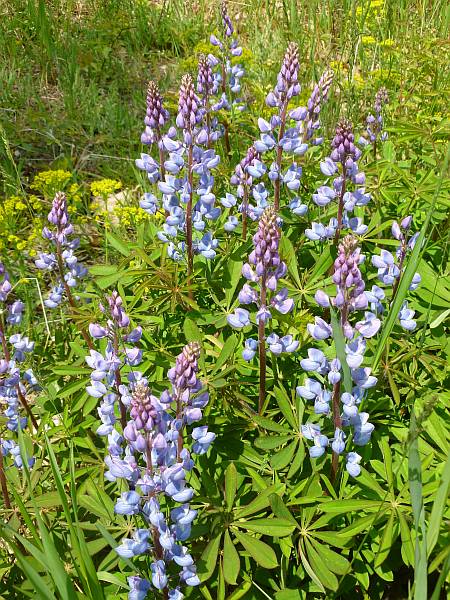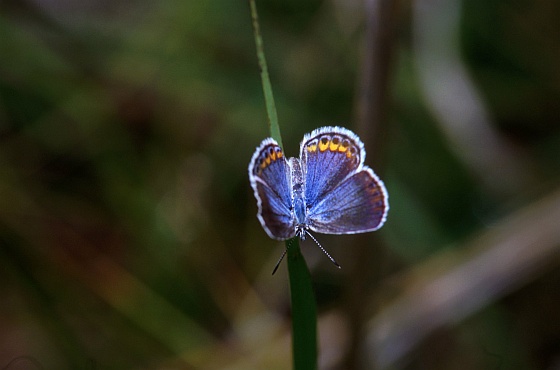
Lupine is a beautiful blue flower that’s a symbol of summer in northern North America. I used to believe (incorrectly) that it couldn’t grow as far south as Pennsylvania. Here it is blooming at Presque Isle State Park earlier this week.
In a patch of wild lupine we could dream that the endangered Karner Blue butterfly (Lycaeides melissa samuelis) would take up residence here, but it would be an impossible dream.
The Karner Blue (shown below) is totally dependent on native wild lupine for its life cycle. It lays its eggs on lupine. Its larvae eat lupine. It places its chrysalis on lupine. Fortunately the adults feed on many flowers but there would be no adults without lupine.
Native wild lupine is not enough. This butterfly prefers oak savanna or pine barren habitat. Unfortunately many of these places were cut down for farming and development or became forests due to fire suppression or the disappearance of gazing animals (buffalo). When the habitat disappeared, so did the butterfly. It’s now extirpated (locally extinct) through most of its range and listed as endangered.
Efforts have been made to restore the Karner Blue’s habitat and the butterfly itself in Ohio and New Hampshire. These have met with some success but the clock is ticking on this species because it requires one more thing. Where winters are cold it needs snow cover to protect its overwintering eggs, but snow cover is becoming rare too because the climate is changing into volatile extremes of heat and cold that melt the snow, then plunge the ground into a deep freeze.
Dependent on lupine and snow, this rare butterfly is unlikely to take up residence in Pennsylvania … ever.
(photo of wild lupine by Dianne Machesney. Photo of the Karner Blue from Wikimedia Commons; click on the butterfly to see the original photo.)

In the area around Albany, NY (where I used to live), there is the Pine Bush Preserve, roughly halfway between Albany & Schenectady. It’s a pine barren, and a home for some Karner Blues. There is, in fact, a sculpture of the butterfly outside of the Preserve’s Discovery Center ( https://www.albanypinebush.org/ ).
The park is several parcels stitched together to make the best preserve that could be managed rather late in the game. It is bisected by US Interstates 87 & 90. (Actually; drawn and quartered would be a more accurate description, although those roads came before the preserve was established.) Worse yet is that adjacent to the preserve is a very large municipal land fill that grows higher each year.
Nonetheless, it is a fascinating habitat, and well-managed as a pine barren by regular cutting and/or burning. I think it would be worth a birding foray for those in the Albany area…